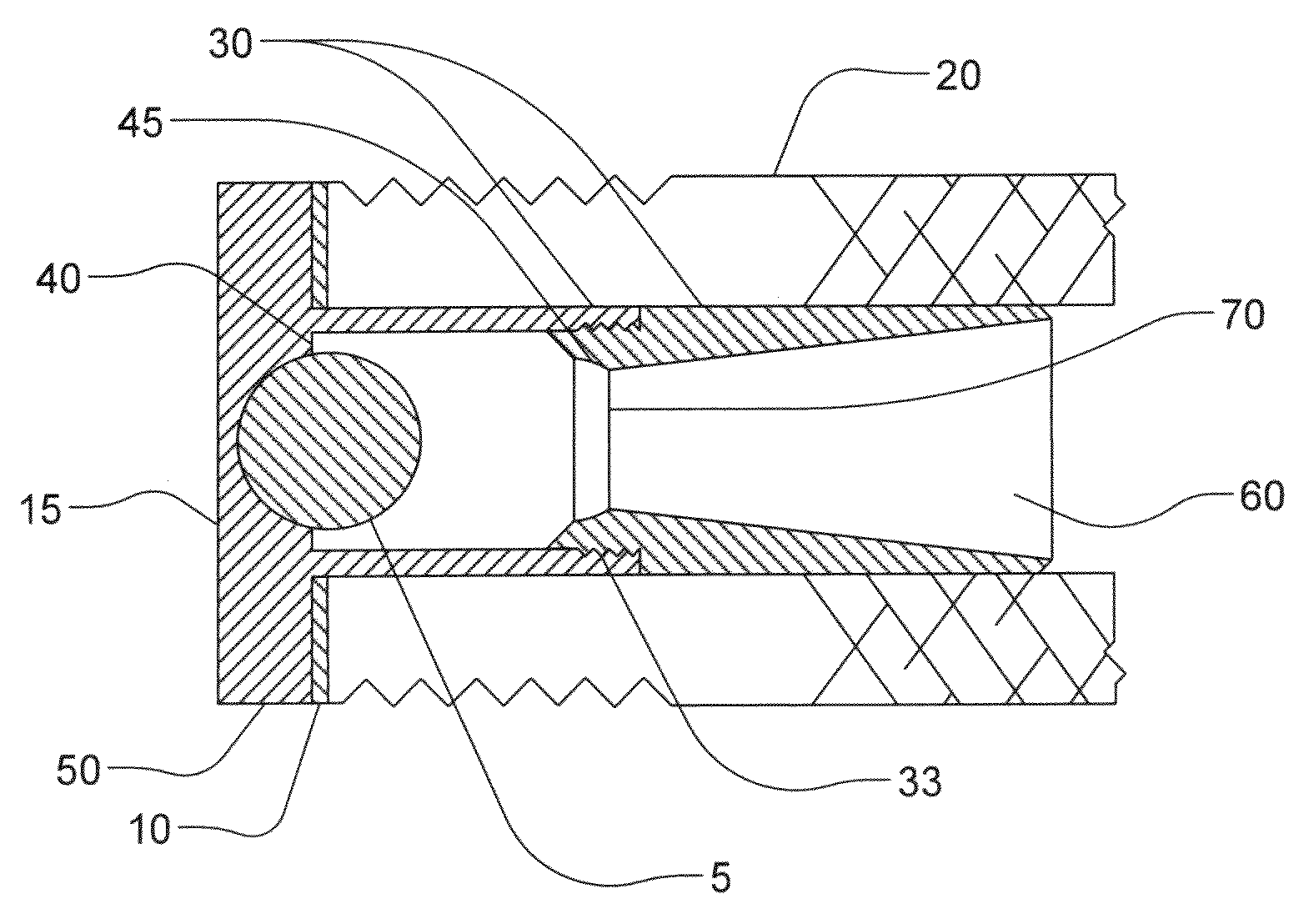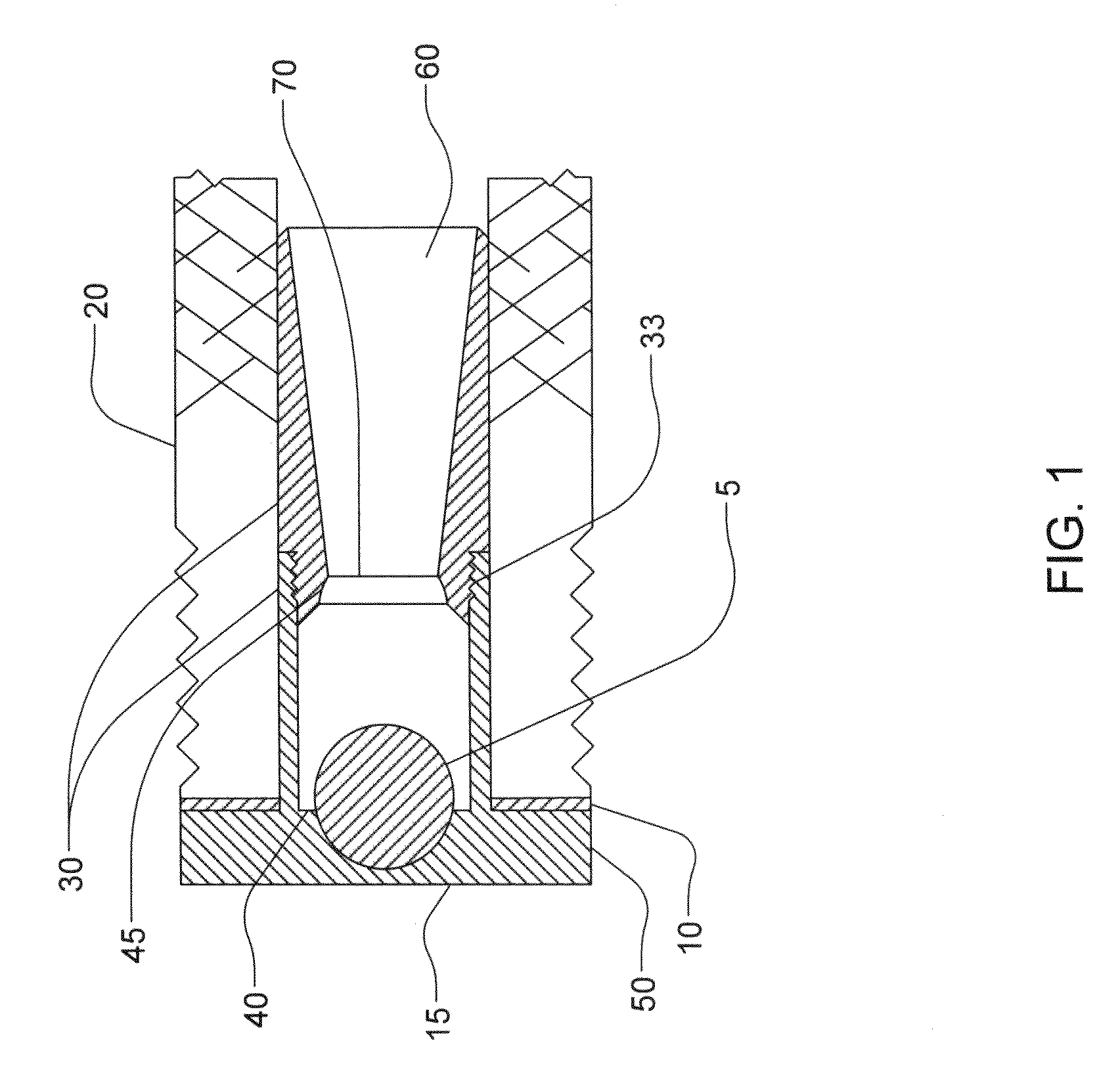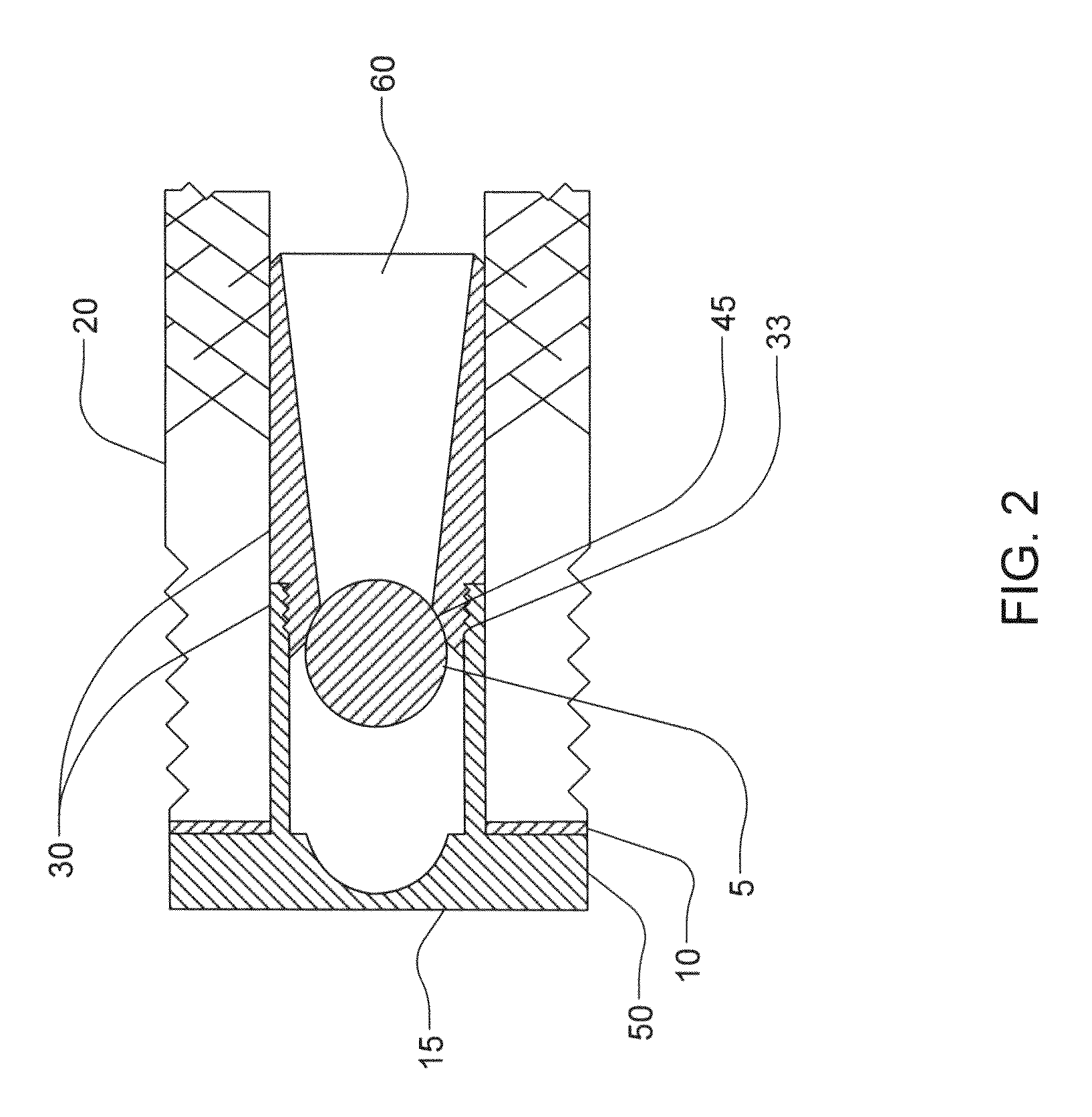Backflow preventer valve
a preventer valve and backflow technology, applied in the field of water delivery systems, can solve the problems of not being tamperproof, generally expensive to purchase, laborious installation, etc., and achieve the effects of preventing leakage, facilitating securing the valve, and convenient insertion
- Summary
- Abstract
- Description
- Claims
- Application Information
AI Technical Summary
Benefits of technology
Problems solved by technology
Method used
Image
Examples
Embodiment Construction
[0053]The present invention will be described with reference to various exemplary embodiments. It should be understood that none of such descriptions are limiting, and all descriptions of exemplary embodiments and their respective components are exemplary, and for illustrative purposes. The present invention is understood to be capable of implementation in various other embodiments and variations of embodiments than those described herein, as will be understood by those skilled in the art.
[0054]In exemplary embodiments of the present invention, an insertable backflow preventer valve (hereinafter sometimes referred to as a “BFP”) can have a ball, and a valve housing. The housing can be provided in two parts, which can, for example, be screwed together to hold the ball there between. The housing can have, for example, a retaining screen on its front end (the distal, or outflow side) and a sealable orifice at its rear end (the proximal, or inflow side). The retaining screen can be prov...
PUM
 Login to View More
Login to View More Abstract
Description
Claims
Application Information
 Login to View More
Login to View More - R&D
- Intellectual Property
- Life Sciences
- Materials
- Tech Scout
- Unparalleled Data Quality
- Higher Quality Content
- 60% Fewer Hallucinations
Browse by: Latest US Patents, China's latest patents, Technical Efficacy Thesaurus, Application Domain, Technology Topic, Popular Technical Reports.
© 2025 PatSnap. All rights reserved.Legal|Privacy policy|Modern Slavery Act Transparency Statement|Sitemap|About US| Contact US: help@patsnap.com



